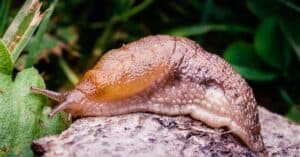Sea slug facts are as many as they are intriguing. Also known as nudibranchs, sea slugs belong to the class Gastropoda and the phylum Mollusca. They have no shells and exist in various sizes, shapes, and colors all over the planet. Some even live in aquariums. These sea slugs have a broad diet, with several species preying on other sea slugs. They breathe through their gills and travel in groups.
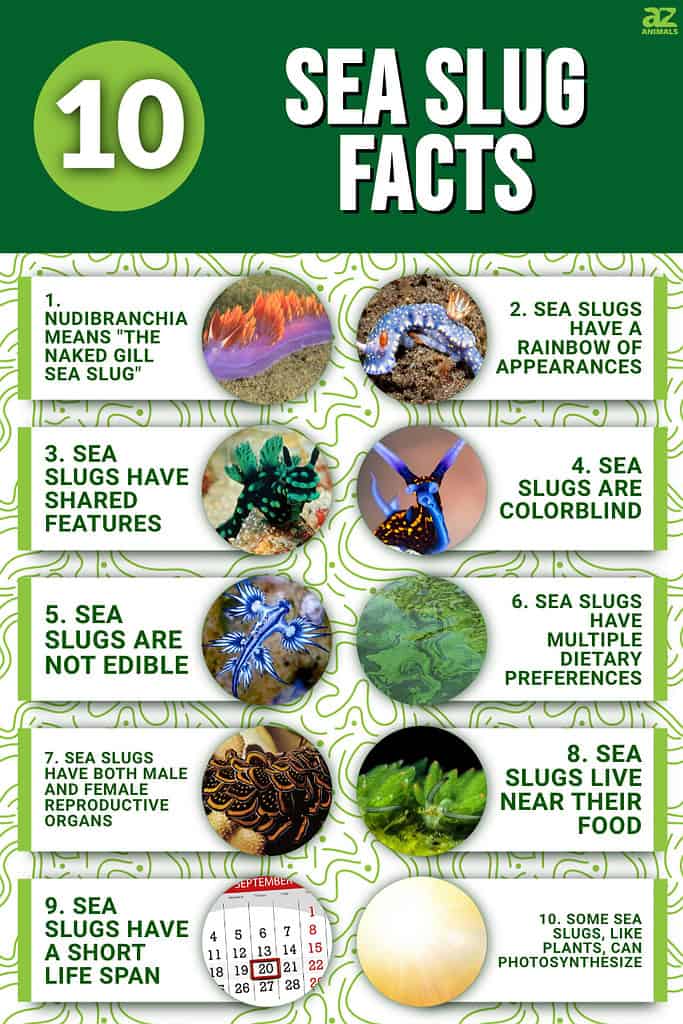
Here are incredible sea slug facts!
1. Nudibranchia Means “The Naked Gill Sea Slug”

Nudibranchia means ‘naked gills.’
©worldswildlifewonders/Shutterstock.com
The scientific name for a sea slug is Nudibranchia. In Latin, Nudibranchia means ‘naked gills.’ This name stems from the sea slug having no shell, which exposes its feather-like gills and horns on its body. It is also known as a gastropod mollusk and pteropod. There are over 2,000 documented species of sea slugs, and they belong to the Gastropoda class, the family of Opistobranches, and are in the phylum Mollusca.
2. Sea Slugs Have a Rainbow of Appearances

Nudibranchs have a range of different appearances.
©cbpix/Shutterstock.com
Nudibranchs have a range of different appearances. Some sea slugs look like garden snails, just without a shell. And, because there are many other species of sea slugs, they have a wide range of different body shapes, sizes, and colors. Many describe the appearance of their bodies as bottle brushes, internal organs, or Christmas ornaments.
Sea slugs are gastropods, which means they have tiny teeth that are super sharp. These sharp teeth are known as Radulas. There are currently eight species living in the Chesapeake Bay, located in the Mid-Atlantic region of the Eastern United States. Some common sea slugs found in the bay are the following:
- Bushy-backed nudibranch
- Ridge-backed nudibranch
- Striped nudibranch
- Frosty-tipped nudibranch
The bushy-backed nudibranch has prickly brand-like extensions on its back, is gray to brown, and is two inches long. The ridge-backed nudibranch has ridges along its back and is white to yellow. The striped nudibranch has two rhinophores, has brown with white stripes, and is three to six inches long. The frosty-tipped nudibranch has white-tipped horns on its back and is an opaque yellow color.
3. Sea Slugs Have Shared Features

Sea slugs will have at least one of a set of features.
©Daniel Lamborn/Shutterstock.com
Sea slugs often share a range of standard external features. Some sea slugs will have all these features, while others will only have one. These attributes are:
- Tentacles: These long extensions are placed at the front of the head and are usually sensitive to smells and touch.
- Rhinophores: These are short and horn-like extensions on the front of the head placed above tentacles if the sea slug has tentacles. The rhinophores are sensitive to smell.
- Cerata: These are multiple extensions on the top of the body. Cerata are respiratory structures, and they use this as a defense.
- Gills: Their gills are a feathery patch of branded structures on their bodies. The gills function in respiration and can retract.
All sea slugs have eyes that can distinguish light from dark. This visual ability means that sea slugs cannot see images. In some species, you will also see their eyes located on top of their heads. In others, the eyes are at the front of the body.
4. Sea Slugs Are Colorblind

Sea slugs only can detect light and dark.
©Mike Workman/Shutterstock.com
Sea slugs have eyes that are primitive and only see the light or dark. Because of this, they navigate by scent using their rhinophores.
5. Sea Slugs Are Not Edible
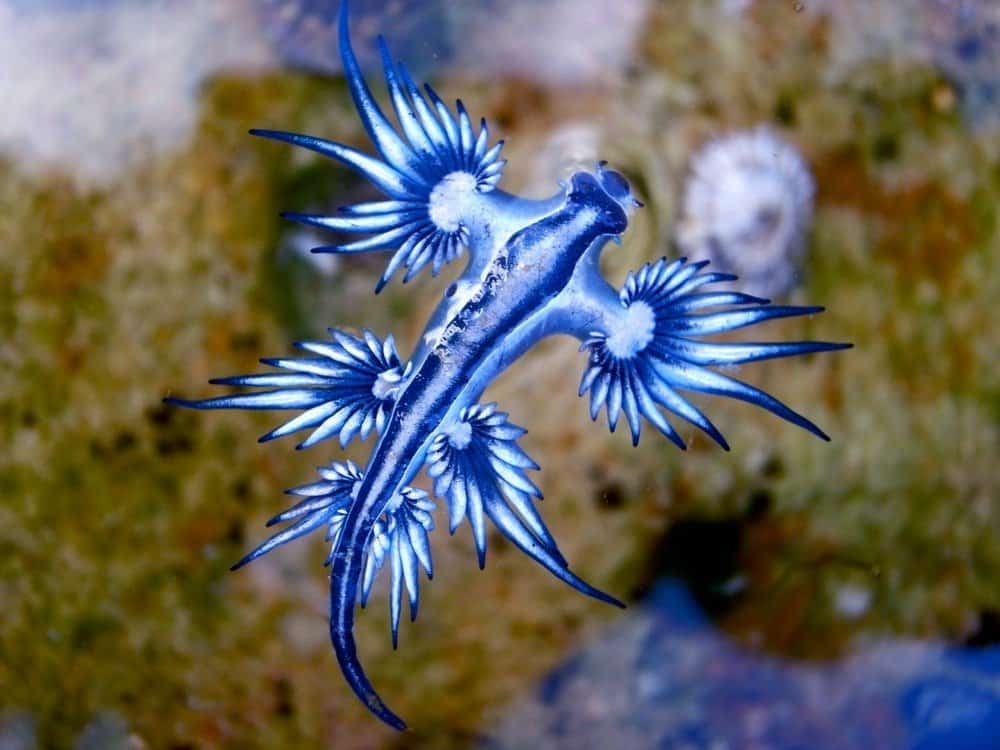
Some sea slugs, like the blue dragon sea slug, are toxic and can be fatal to people.
©Sahara Frost/Shutterstock.com
The beautiful colors of the sea creatures are a warning sign to show that they are incredibly toxic. To predators, the sea slugs are poisonous and may be fatal. A few species are harmful to humans, specifically the blue dragon sea slug. It could be disastrous if a blue dragon sea slug stings you or you ingest one accidentally or intentionally.
6. Sea Slugs Have Multiple Dietary Preferences
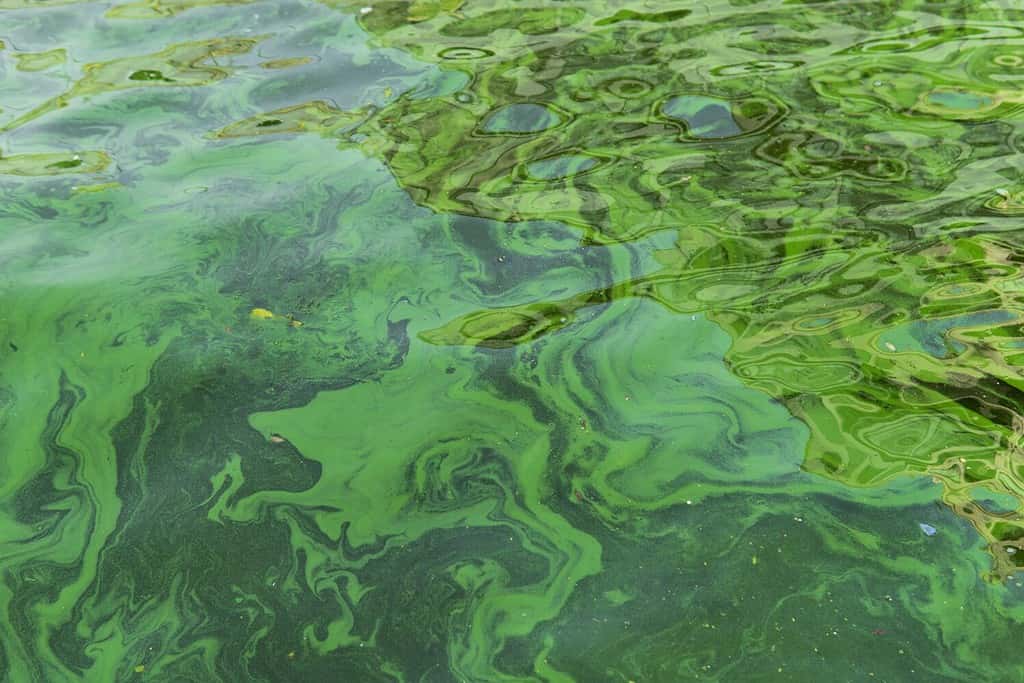
Algae is one of sea slugs’ most common foods.
©Aleksandrkozak/Shutterstock.com
Sea slugs live in areas where food is bountiful and easy to find. They prey on jellyfish, sea anemones, bryozoans, and other sea slugs. This broad dietary selection means they can be carnivores, herbivores, or omnivores, depending on the species. Herbivorous sea slugs mainly eat algae and small plants. As these animals prey on a wide range of food, they also have many predators. Examples of their predators are fish, crabs, and lobsters.
7. Sea Slugs Have Both Male and Female Reproductive Organs

Sea Slugs have both sets of reproductive organs.
©Dino Sassi – Marcel Fayon – Public Domain
Sea slugs can mate with individuals of the same species. They have a penile stylet, a jelly-like tube with a sharp tip. Sea slugs use this penile stylet to puncture the skin of another sea slug, releasing a mix of secretions made by the prostate gland into the other sea slug’s body. The recipient sea slug will then lay eggs that take five to 50 days to become larvae. Even though sea slugs have male and female reproductive organs, some species can reproduce asexually.
8. Sea Slugs Live Near Their Food
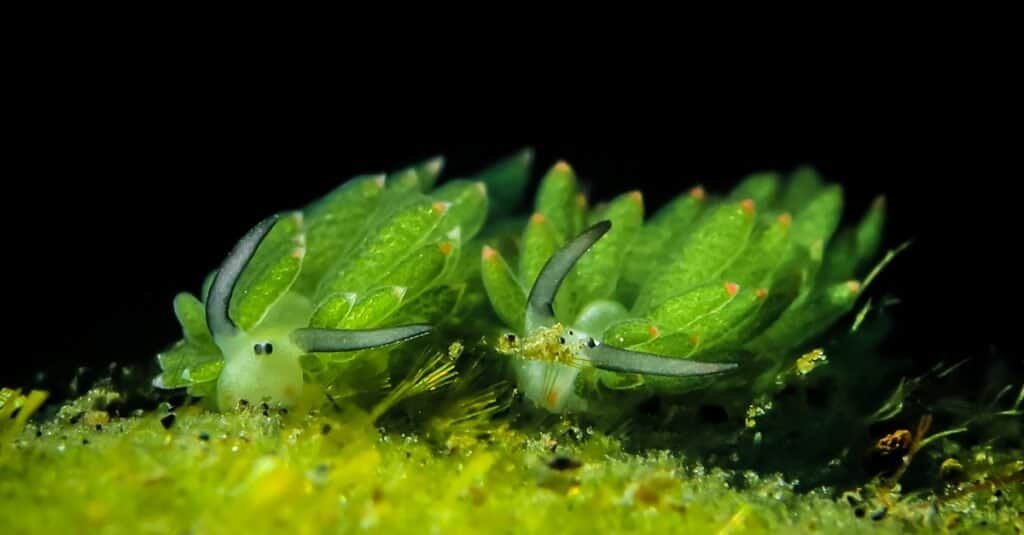
Sea slugs base their habitat near their food sources.
©kaenscuba/Shutterstock.com
Sea slugs base their habitat near their food sources. These animals live in estuaries, coral reefs, rocky shores, and deep water. Interestingly, some species have evolved to live out of the water. Because of this, they must stay on land, as they can drown if they attempt to go near large water sources.
9. Sea Slugs Have a Short Life Span

Sea slugs won’t reach their second birthday.
©iStock.com/Aliaksandr Bukatsich
The lifespan of the sea slug depends on its species, with most only living to one year old. Some species, like the Dolabella auricularia, live for up to six years in an aquarium. Another species, the Cephalaspidean philine gibba, is known to have a lifespan of between four and five years.
10. Some Sea Slugs, Like Plants, Can Photosynthesize

Amazingly, some sea slugs can live off sunlight.
©enjoy photo/Shutterstock.com
Specific sea slug species can live off sunlight and photosynthesize when no food or algae is available. They will then solely live off solar power. An example of a species of sea slug that does this is the Elysia chlorotica. This sea slug is known to swipe photosynthesizing cells and genes from the algae it eats.
The photo featured at the top of this post is © Mike Workman/Shutterstock.com
Sources
- Kidadl, Available here: https://kidadl.com/facts/animals/sea-slug-facts
- Mental Floss, Available here: https://www.mentalfloss.com/article/74154/7-vivid-facts-about-sea-slugs
- Owlcation, Available here: https://owlcation.com/stem/Beautiful-Sea-Slugs-and-Facts-About-Marine-Gastropods
- Surf Researcher, Available here: https://centerforsurfresearch.org/blue-glaucus/
Thank you for reading! Have some feedback for us? Contact the AZ Animals editorial team.



